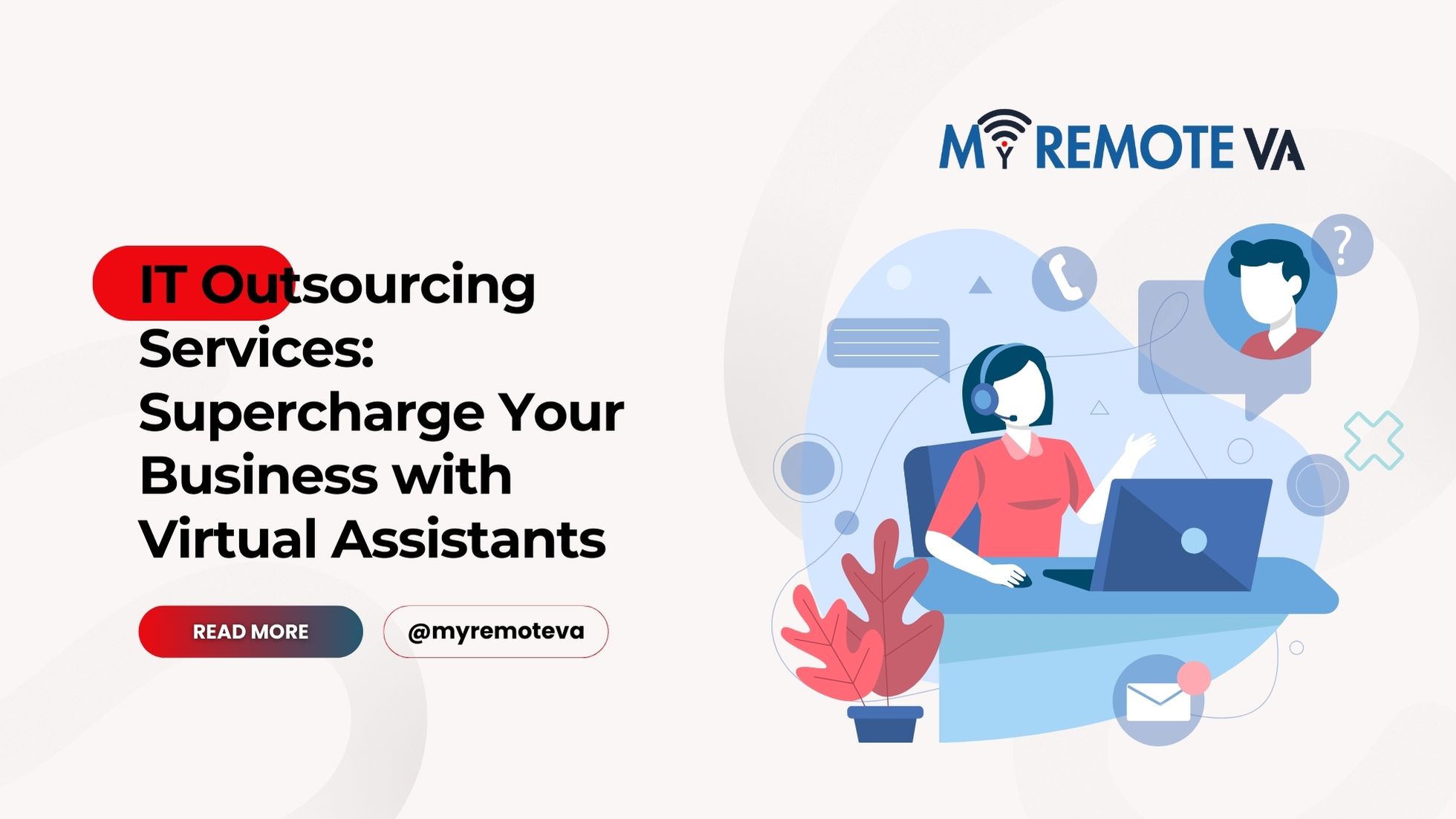IT Outsourcing: Unlock Growth and Efficiency
In today’s rapidly evolving business landscape, IT outsourcing has become a crucial strategy for organizations seeking to optimize their operations, drive innovation, and achieve sustainable growth. By entrusting specific IT functions to external experts, businesses can gain access to specialized skills, reduce costs, and focus on their core competencies.
- IT Outsourcing: Unlock Growth and Efficiency
- What is IT Outsourcing?
- Benefits of IT Outsourcing
- Common IT Outsourcing Services
- Recent Market Signals in Key Regions (Excluding India, Bangladesh, Pakistan)
- Choosing the Right IT Outsourcing Partner
- Potential Challenges of IT Outsourcing
- Mitigating IT Outsourcing Challenges
- FAQ: IT Outsourcing
- What Types of Businesses Benefit from IT Outsourcing?
- How much does IT outsourcing cost?
- How do I ensure data security when outsourcing IT functions?
- What are the Key Performance Indicators (KPIs) for IT Outsourcing?
- How do I manage communication with an outsourced IT team?
- What is the Best Time to Consider IT Outsourcing?
- What are the risks involved in IT outsourcing, and how can I mitigate them?
- How does IT Outsourcing Affect My Existing IT Staff?
- What is the difference between onshore, nearshore, and offshore IT outsourcing?
- What Kind of Support Can I Expect From An IT Outsourcing Partner?
Benefits of IT Outsourcing
IT outsourcing offers a multitude of advantages:
- Reduced Costs: Access a global talent pool and avoid expenses associated with hiring, training, and retaining in-house IT staff.
- Access to Specialized Expertise: Gain access to specialized skills and technologies that may not be readily available internally, such as cybersecurity experts, data scientists, or cloud computing specialists.
- Increased Efficiency and Productivity: Offload time-consuming IT tasks, freeing up internal resources to focus on strategic initiatives and core business activities.
- Improved Scalability and Flexibility: Easily scale IT resources up or down based on changing business needs, ensuring optimal resource allocation and cost management.
- Focus on Core Competencies: Concentrate on your core business activities, allowing IT experts to handle complex technical challenges.
- Enhanced Innovation: Leverage external expertise to drive innovation and adopt new technologies, staying ahead of the competition.
Is IT Outsourcing Right for You?
Consider the following to determine if IT outsourcing aligns with your business objectives:
- Are you struggling to find or retain qualified IT staff?
- Are your IT costs spiraling out of control?
- Do you need access to specialized IT skills or technologies?
- Are you spending too much time on IT tasks that could be outsourced?
If you answered yes to any of these questions, IT outsourcing may be a viable solution to help you achieve your business goals. Just like some companies offer virtual assistant support and teams, IT outsourcing firms can work with you using hourly or dedicated plans. The best options offer a range of service levels to fit every budget. Some even offer free introductory periods to trial the service before committing to a contract.
What is IT Outsourcing?
IT outsourcing involves delegating some or all of your company’s IT functions to an external service provider. Instead of hiring and managing an in-house IT team, you partner with a company that specializes in IT services to handle tasks like network management, software development, cybersecurity, help desk support, and more.
Why Companies Choose IT Outsourcing
There are several compelling reasons why businesses choose to outsource their IT:
- Cost Savings: Often, outsourcing can be more cost-effective than maintaining an internal IT department, especially for specialized skills. You avoid expenses like salaries, benefits, training, and infrastructure costs.
- Access to Expertise: Outsourcing provides access to a wider range of IT expertise and specialized skills that might be difficult or expensive to find in-house.
- Focus on Core Business: By outsourcing IT, you free up your internal resources and allow your team to focus on core business activities that drive revenue and growth.
- Scalability and Flexibility: Outsourcing provides the flexibility to scale your IT resources up or down as needed, depending on your business needs and changing demands.
- Improved Efficiency and Reliability: Experienced IT outsourcing providers often have well-defined processes and robust infrastructure, leading to improved efficiency and more reliable IT operations.
Common IT Outsourcing Services
The specific IT services that companies outsource can vary widely depending on their needs. Some common examples include:
- Software Development: Building custom software applications, web development, and mobile app development.
- Network Management: Managing and maintaining network infrastructure, including routers, switches, and firewalls.
- Cybersecurity: Protecting systems and data from cyber threats through services like security audits, threat detection, and incident response.
- Help Desk Support: Providing technical support to employees and customers.
- Cloud Computing: Managing cloud infrastructure and services.
- Data Management: Managing and storing data, including data backup and recovery.
Benefits of IT Outsourcing
IT outsourcing offers a range of advantages, particularly for startups, agencies, and businesses looking to scale efficiently and access specialized skills without the overhead of full-time employees. By delegating IT tasks, companies can focus on core business functions and strategic initiatives.
Cost Reduction
One of the primary benefits is cost reduction. IT outsourcing can significantly lower labor costs, including salaries, benefits, training, and infrastructure. Instead of hiring and maintaining an in-house IT team, you pay for the specific services you need, when you need them.
Access to Specialized Skills and Expertise
IT outsourcing provides access to a wider pool of specialized skills and expertise. You can tap into resources that may not be readily available or affordable to acquire internally. This is particularly beneficial for emerging technologies or complex IT projects that require specific skill sets.
Increased Efficiency and Productivity
Outsourcing IT tasks can lead to increased efficiency and productivity. Dedicated IT professionals can streamline processes, automate tasks, and optimize systems, freeing up internal resources to focus on other critical areas of the business.
Improved Focus on Core Business Functions
By offloading IT responsibilities, companies can concentrate on their core competencies and strategic objectives. This allows them to innovate, grow their business, and better serve their customers without being bogged down by day-to-day IT management.
Scalability and Flexibility
IT outsourcing offers greater scalability and flexibility. You can easily scale up or down your IT resources based on your changing business needs. This allows you to adapt quickly to new opportunities and challenges without being constrained by fixed costs and infrastructure. For example, with curated Hourly Monthly Plans offering 5, 10, 20, or 30 hours of assistance, or the option to build a dedicated team, businesses can find the support that perfectly aligns with their requirements and budget.
24/7 Support and Reduced Downtime
Many IT outsourcing providers offer 24/7 support, ensuring that your systems are monitored and maintained around the clock. This can help to minimize downtime and prevent disruptions to your business operations.
Common IT Outsourcing Services
IT outsourcing encompasses a wide range of services designed to alleviate your internal workload and provide specialized expertise. By delegating these tasks, you can focus on your core business objectives and drive growth.
Software Development & Maintenance
Outsourcing software development allows you to access a global talent pool and build custom applications tailored to your specific needs. This includes everything from initial design and coding to ongoing maintenance, updates, and bug fixes. Many companies also leverage outsourcing for legacy system modernization.
Infrastructure Management
Managing your IT infrastructure can be complex and time-consuming. Outsourcing this area provides access to skilled professionals who can handle server management, network administration, cloud computing, and cybersecurity. This often results in improved performance, reliability, and security.
Help Desk and Technical Support
Providing reliable technical support is crucial for customer satisfaction and employee productivity. Outsourcing your help desk can ensure that users receive timely assistance with hardware, software, and network issues. This frees up your internal IT team to focus on more strategic initiatives.
Data Management and Analytics
In today’s data-driven world, effective data management and analytics are essential for making informed business decisions. Outsourcing this function gives you access to experts who can collect, store, process, and analyze large datasets to identify trends, patterns, and insights.
Cybersecurity Services
Protecting your organization from cyber threats is paramount. Outsourcing cybersecurity services provides access to specialized expertise in areas such as threat detection, vulnerability assessment, incident response, and security compliance. This helps you mitigate risks and maintain a secure IT environment.
Other Common IT Outsourcing Services
- Database Administration
- Cloud Migration and Management
- Mobile App Development
- IT Consulting
Consider the specific needs of your business when evaluating IT outsourcing options. By carefully selecting the right services and outsourcing partner, you can achieve significant cost savings, improved efficiency, and enhanced innovation.
Recent Market Signals in Key Regions (Excluding India, Bangladesh, Pakistan)
While India, Bangladesh, and Pakistan remain prominent IT outsourcing hubs, other regions are experiencing notable growth and shifts, reflecting evolving client priorities and service provider capabilities. These signals indicate a diversification of the IT outsourcing landscape.
Eastern Europe: Continued Growth in Specialized Skills
Eastern Europe continues to attract IT outsourcing interest due to its strong talent pool, particularly in software development, cybersecurity, and AI. Companies are increasingly seeking specialized skills in areas like cloud computing and data analytics from this region. The appeal lies in a balance of competitive pricing and relatively close cultural alignment with Western European and North American clients.
Latin America: Nearshore Advantage and Expanding Capabilities
Latin America is solidifying its position as a strong nearshore IT outsourcing destination for North American companies. The advantages include geographical proximity, similar time zones, and a growing pool of skilled IT professionals. We’re seeing increased demand for services in areas such as application development, customer support, and digital marketing. Businesses leverage Latin America for efficient communication and project management. Some countries are also focusing on developing niche specializations to attract higher-value outsourcing projects.
Southeast Asia (excluding Bangladesh): Emerging Hubs and Diversified Services
Countries in Southeast Asia, excluding Bangladesh, are experiencing growth in IT outsourcing, fueled by investments in infrastructure and education. These regions are increasingly offering a wider range of IT services, including software testing, infrastructure management, and BPO. The competitive pricing and skilled workforce are drawing attention from global businesses.
Africa: Untapped Potential and Niche Expertise
While still developing, certain African countries are showing promise as potential IT outsourcing destinations. Initiatives to improve digital infrastructure and invest in IT education are starting to bear fruit. Specific areas of expertise, such as mobile application development and data entry, are emerging. Though the market is smaller and less mature, the cost benefits and potential for growth make it an area to watch.
Choosing the Right IT Outsourcing Partner
Selecting the right IT outsourcing partner is a critical decision that can significantly impact your organization’s success. A well-chosen partner can provide specialized expertise, reduce costs, and allow you to focus on your core competencies. However, a poor choice can lead to project delays, security breaches, and ultimately, financial losses.
Before embarking on your search, clearly define your IT needs and outsourcing goals. What specific functions are you looking to outsource? What are your expectations in terms of cost savings, efficiency gains, and quality of service? Having a clear understanding of your requirements will help you narrow down your options and find a partner that aligns with your business objectives.
Key Considerations When Evaluating Potential Partners
- Expertise and Experience: Look for a partner with a proven track record in the specific IT areas you need support with. Check their portfolio, case studies, and client testimonials to assess their capabilities and experience.
- Communication and Collaboration: Effective communication is essential for successful IT outsourcing. Ensure the partner has robust communication channels and processes in place, and that their team is responsive and proactive in addressing your concerns.
- Security and Compliance: Data security and compliance are paramount, especially when dealing with sensitive information. Verify that the partner has strong security protocols and is compliant with relevant industry regulations.
- Cost and Pricing Models: Understand the partner’s pricing structure and ensure it aligns with your budget. Evaluate different pricing models, such as fixed-price, time and materials, or value-based pricing, and choose the one that best suits your needs.
- Cultural Fit: Consider the cultural compatibility between your organization and the potential partner. A good cultural fit can foster better collaboration and communication, leading to a more successful outsourcing relationship.
Many companies are finding value in flexible options for accessing IT support. These options are available in hourly or dedicated models, allowing companies to delegate admin, tech, or customer support tasks. A Dedicated Supervisor manages the team, processes, and reporting.
Potential Challenges of IT Outsourcing
While IT outsourcing offers numerous benefits, it’s essential to be aware of potential challenges to ensure a smooth and successful partnership.
Communication Barriers
Effective communication is crucial for any successful project. When outsourcing IT tasks, geographical distance, time zone differences, and cultural nuances can sometimes lead to communication breakdowns. It’s important to establish clear communication channels and protocols from the outset, ensuring both parties understand expectations and can readily address any issues that arise.
Security Risks
Entrusting sensitive data and IT infrastructure to an external provider inevitably introduces security risks. Data breaches, compliance violations, and intellectual property theft are all potential concerns. Thorough due diligence, robust security contracts, and ongoing monitoring are crucial to mitigating these risks. Implementing stringent security protocols and regularly auditing the provider’s security measures are also essential.
Loss of Control
Outsourcing IT functions can lead to a perceived or actual loss of control over certain aspects of your technology infrastructure. This can be particularly concerning for companies that are accustomed to having direct oversight of their IT operations. Clearly defining service level agreements (SLAs) and establishing regular reporting mechanisms can help maintain a degree of control and ensure the provider is meeting agreed-upon standards.
Dependency on the Provider
Becoming overly reliant on a single IT outsourcing provider can create vulnerabilities. If the provider experiences financial difficulties, service disruptions, or goes out of business, your business could be significantly impacted. Diversifying your outsourcing arrangements or maintaining a backup plan can help mitigate this risk.
Hidden Costs
While cost savings are often a primary driver for IT outsourcing, it’s important to carefully scrutinize contracts and anticipate potential hidden costs. These may include transition costs, management overhead, and fees for additional services or exceeding agreed-upon usage limits. A thorough understanding of the total cost of ownership is essential for making informed decisions.
By proactively addressing these potential challenges, businesses can maximize the benefits of IT outsourcing while minimizing potential risks.
Mitigating IT Outsourcing Challenges
IT outsourcing can be a powerful strategy, but it’s not without potential hurdles. Understanding and proactively addressing these challenges is crucial for a successful partnership.
Common IT Outsourcing Challenges
- Communication Barriers: Geographical distance and cultural differences can sometimes lead to miscommunication and misunderstandings. Clear communication protocols and consistent reporting are essential.
- Data Security Concerns: Protecting sensitive data is paramount. Robust security measures, data encryption, and strict adherence to compliance regulations are necessary to mitigate risks.
- Lack of Control: Some companies worry about losing control over IT processes when outsourcing. Establishing clear service level agreements (SLAs) and maintaining regular oversight can alleviate these concerns.
- Hidden Costs: Unforeseen expenses can arise if the outsourcing agreement is not comprehensive. Carefully review all terms and conditions, and factor in potential costs like transition fees and scope changes.
- Integration Issues: Integrating the outsourced IT services with existing systems can be complex. A phased approach to integration and thorough testing are crucial for a seamless transition.
Strategies for Success
To minimize these challenges, consider the following strategies:
- Thorough Due Diligence: Carefully vet potential outsourcing partners, assessing their expertise, security practices, and communication skills.
- Clear and Comprehensive Agreements: Develop a detailed contract that outlines responsibilities, performance metrics, and dispute resolution mechanisms.
- Regular Communication and Monitoring: Establish clear communication channels and implement a system for monitoring performance against agreed-upon SLAs.
- Strong Security Protocols: Implement robust security measures to protect sensitive data, including encryption, access controls, and regular security audits.
- Ongoing Management and Oversight: Dedicate internal resources to manage the outsourcing relationship and ensure alignment with business goals.
By addressing these challenges head-on and implementing proactive strategies, companies can successfully leverage IT outsourcing to achieve their business objectives.
FAQ: IT Outsourcing
Considering IT outsourcing but have some questions? You’re not alone. Many businesses, from startups to established agencies, explore IT outsourcing to gain access to specialized skills, reduce costs, and focus on their core business activities. Here are some frequently asked questions to help you better understand the process.
What is IT Outsourcing?
IT outsourcing involves delegating your IT-related tasks and responsibilities to an external service provider. This can encompass a wide range of services, from managing your network infrastructure to developing custom software solutions. The specific tasks outsourced depend on your business needs and goals.
What are the Benefits of IT Outsourcing?
IT outsourcing offers several key benefits, including:
- Cost Savings: Access skilled IT professionals without the overhead costs of hiring full-time employees.
- Access to Expertise: Tap into a wider range of specialized skills and knowledge.
- Increased Efficiency: Focus on your core competencies while outsourcing non-core IT functions.
- Scalability: Easily scale your IT resources up or down as your business needs change.
- Improved Security: Partner with experts to enhance your IT security posture.
What types of IT tasks can I outsource?
The possibilities are vast. Common IT outsourcing tasks include:
- Software development and maintenance
- Network infrastructure management
- Cloud computing services
- Data analytics and reporting
- Cybersecurity
- Help desk and technical support
How do I choose the right IT outsourcing partner?
Selecting the right partner is crucial. Consider these factors:
- Expertise and Experience: Do they have the skills and experience relevant to your needs?
- Communication and Collaboration: Can they communicate effectively and collaborate seamlessly with your team?
- Security Measures: Do they have robust security protocols in place to protect your data?
- Pricing and Payment Structure: Is their pricing transparent and aligned with your budget?
- Client Testimonials and References: What do their existing clients say about their services?
How does the delegation process typically work?
The process often starts with identifying the IT tasks you want to outsource. Then, you’ll evaluate potential providers, discuss your needs, and agree on a service level agreement (SLA). Once you’ve selected a provider, you can delegate a wide range of tasks. Think of it as expert assistant support, freeing up your time to focus on other critical areas.
What if I only need help with IT tasks for a few hours a month?
Many outsourcing providers offer flexible plans to accommodate different needs. Some providers offer plans based on hourly usage or dedicated teams, allowing you to choose the option that best fits your budget and requirements.
What Types of Businesses Benefit from IT Outsourcing?
IT outsourcing can provide significant advantages to a wide range of businesses, regardless of size or industry. By delegating IT functions to external experts, companies can focus on their core competencies, reduce costs, and gain access to specialized skills.
Startups and Small Businesses
For startups and small businesses, IT outsourcing offers a cost-effective way to access essential IT services without the expense of hiring a full-time IT staff. This allows them to compete more effectively with larger companies and allocate resources to other critical areas, such as product development and marketing. For example, a startup might outsource its website development and maintenance or its data backup and recovery services.
Growing Businesses
Businesses experiencing rapid growth can benefit from IT outsourcing by scaling their IT resources quickly and efficiently. Instead of struggling to keep up with the increasing demands on their IT infrastructure, they can partner with an outsourcing provider to handle tasks such as network management, cybersecurity, and cloud migration. This scalability can be crucial for maintaining business continuity and supporting future expansion.
Large Enterprises
Even large enterprises with established IT departments can leverage IT outsourcing to augment their existing capabilities and address specific IT challenges. This might involve outsourcing specialized tasks, such as application development, data analytics, or cybersecurity incident response. By outsourcing non-core IT functions, large companies can free up their internal IT staff to focus on strategic initiatives and innovation.
Businesses in Need of Specialized Expertise
Certain industries require specialized IT expertise that may be difficult or expensive to acquire in-house. For example, businesses in the healthcare or financial services sectors often need to comply with strict regulatory requirements related to data security and privacy. IT outsourcing can provide access to experts who have the necessary skills and experience to navigate these complex compliance requirements.
Businesses Seeking Cost Savings
One of the primary drivers of IT outsourcing is cost reduction. By outsourcing IT functions to regions with lower labor costs, businesses can significantly reduce their IT expenses. In addition, outsourcing can eliminate the need for capital investments in IT infrastructure and reduce the costs associated with training and managing an internal IT staff. Data suggest that businesses can reduce IT costs by up to 40% through outsourcing.
How much does IT outsourcing cost?
The cost of IT outsourcing can vary significantly depending on several factors. Understanding these factors is crucial for budgeting and ensuring you receive the best value for your investment.
Factors Influencing IT Outsourcing Costs
Several key elements influence the final cost of IT outsourcing:
- Scope of Work: The more extensive and complex the tasks you delegate, the higher the cost. Simple tasks like basic help desk support will generally be less expensive than complex software development or cybersecurity services.
- Location of Outsourcing Partner: Labor costs differ greatly between regions. Outsourcing to countries with lower living costs often results in lower rates, but communication barriers and time zone differences should also be considered.
- Expertise and Skill Level: Highly specialized skills command higher rates. Senior developers, cybersecurity experts, or IT architects will generally be more expensive than entry-level support staff.
- Contract Type: Fixed-price contracts, time-and-materials contracts, and dedicated team models each have different pricing structures. Fixed-price contracts offer predictability but may be less flexible, while time-and-materials contracts provide flexibility but require close monitoring. A dedicated team model gives you consistent resources for a longer-term, often with a monthly subscription fee.
- Technology Stack: The tools, software, and platforms needed can greatly impact the cost. Some of the latest technologies may require specific skilled professionals or extra investment.
Budgeting for IT Outsourcing
Effective budgeting for IT outsourcing requires a clear understanding of your specific needs and objectives. Consider the following:
- Identify specific tasks: Start by clearly defining the tasks or functions you want to outsource. The more precise you are, the easier it will be to get accurate quotes.
- Gather multiple quotes: Request proposals from several outsourcing providers to compare pricing and service offerings.
- Factor in hidden costs: Don’t forget to account for potential hidden costs such as project management overhead, communication expenses, or onboarding fees.
- Consider long-term value: Focus not just on the initial cost, but also on the long-term value and benefits of outsourcing, such as increased efficiency, improved quality, and access to specialized expertise.
Some businesses, especially startups and those with fluctuating IT needs, may find a flexible, hourly-based approach more cost-effective. This allows you to delegate tasks as needed without committing to a full-time resource. You can delegate tech tasks to a virtual assistant and a Dedicated Supervisor manages your VA, shift, processes, and reporting so you don’t have to. You can choose from curated Hourly Monthly Plans of (5, 10, 20, 30 hours) or build a team with Dedicated Plans, for 80 hours, or for 160 hours, or multi-VA setups.
How do I ensure data security when outsourcing IT functions?
Data security is paramount when outsourcing IT functions. Entrusting sensitive data to an external provider requires careful planning and proactive measures. Here’s a breakdown of key considerations:
1. Comprehensive Security Assessment and Due Diligence
Before engaging an IT outsourcing provider, conduct a thorough security assessment. This should include evaluating their security infrastructure, policies, and compliance certifications. Verify they meet industry standards relevant to your data (e.g., HIPAA, GDPR, PCI DSS). This process helps identify potential vulnerabilities and ensures the provider takes data security seriously.
2. Robust Contracts and Service Level Agreements (SLAs)
Your contract should clearly outline data security responsibilities. Include specific provisions regarding data encryption, access controls, data retention policies, and incident response protocols. An SLA should define measurable security metrics and penalties for breaches, holding the provider accountable for maintaining agreed-upon security standards.
3. Data Encryption and Access Control
Insist on strong data encryption both in transit and at rest. Implement strict access controls to limit who can access sensitive data and monitor all access attempts. Use multi-factor authentication (MFA) wherever possible to add an extra layer of security.
4. Regular Security Audits and Penetration Testing
Schedule regular security audits and penetration testing conducted by independent third parties. These audits can identify vulnerabilities and weaknesses in the provider’s security posture that may not be apparent otherwise. Act on the findings of these audits to remediate any identified risks promptly.
5. Incident Response Plan
Establish a clear incident response plan that outlines procedures for handling security breaches. This plan should detail communication protocols, containment strategies, recovery procedures, and reporting requirements. Test the plan regularly to ensure its effectiveness.
6. Data Location and Jurisdiction
Understand where your data will be stored and processed. Different countries have different data protection laws. Ensure that the provider complies with all applicable laws and regulations, including those in your jurisdiction and where the data is located. Consider the legal implications of storing data in a particular location.
7. Employee Training and Awareness
The IT outsourcing provider’s employees should receive regular training on data security best practices. This includes awareness of phishing scams, social engineering attacks, and other common security threats. A well-trained workforce is a crucial line of defense against data breaches.
8. Continuous Monitoring and Threat Detection
Implement continuous monitoring and threat detection systems to identify and respond to security incidents in real time. These systems can detect suspicious activity and alert security personnel to potential breaches. Using tools that automatically analyze logs and network traffic can significantly improve incident response times.
By implementing these measures, you can significantly reduce the risk of data breaches when outsourcing IT functions and protect your valuable information.
What are the Key Performance Indicators (KPIs) for IT Outsourcing?
Measuring the success of your IT outsourcing initiatives requires a clear understanding of key performance indicators (KPIs). These metrics provide valuable insights into the effectiveness of your outsourcing strategy and help you identify areas for improvement. While specific KPIs will vary based on your unique business goals and the scope of your outsourced services, several core indicators are commonly tracked.
Cost Efficiency
One of the primary drivers of IT outsourcing is often cost reduction. KPIs related to cost efficiency include:
- Overall Cost Savings: Track the difference between your previous in-house IT expenses and the current costs associated with outsourcing.
- Cost per Transaction/Unit: Measure the cost of delivering specific IT services, such as help desk tickets resolved or lines of code developed.
- Return on Investment (ROI): Calculate the financial return generated from your IT outsourcing investment, taking into account both cost savings and increased productivity.
Service Quality and Performance
Maintaining or improving service quality is crucial. Monitor these KPIs to ensure your outsourced IT services are meeting your expectations:
- Service Level Agreement (SLA) Compliance: Track the vendor’s adherence to agreed-upon service levels, such as uptime, response times, and resolution times.
- Customer Satisfaction (CSAT): Measure customer satisfaction with the outsourced IT services, using surveys, feedback forms, or other methods.
- Ticket Resolution Time: Monitor the average time taken to resolve IT support tickets, indicating the efficiency of the outsourced support team.
- System Uptime: Track the availability and reliability of critical IT systems and applications.
Process Efficiency and Productivity
Outsourcing can improve process efficiency and boost productivity. Relevant KPIs include:
- Process Automation Rate: Measure the extent to which IT processes have been automated, leading to reduced manual effort and faster turnaround times.
- Project Completion Time: Track the time taken to complete IT projects, such as software development or system upgrades.
- Error Rate: Monitor the number of errors or defects in IT processes, indicating the quality of the outsourced services.
Innovation and Business Value
IT outsourcing can also contribute to innovation and generate business value. Consider these KPIs:
- New IT Solutions Implemented: Track the number of innovative IT solutions or technologies implemented by the outsourcing partner.
- Business Process Improvement: Measure the extent to which outsourced IT services have improved business processes, such as order fulfillment or customer service.
- Revenue Growth: Assess the impact of IT outsourcing on revenue growth, by enabling new business opportunities or improving operational efficiency.
By carefully selecting and monitoring relevant KPIs, you can gain a clear understanding of the value delivered by your IT outsourcing partnerships and make data-driven decisions to optimize your strategy for maximum success.
How do I manage communication with an outsourced IT team?
Effective communication is paramount to the success of any IT outsourcing endeavor. Clear and consistent interaction helps ensure projects stay on track, issues are resolved promptly, and expectations are met.
Establish Clear Communication Channels
Define preferred communication channels from the outset. This might include:
- Regular Video Conferences: Schedule weekly or bi-weekly meetings to discuss progress, address challenges, and foster a collaborative environment.
- Instant Messaging Platforms: Use platforms like Slack or Microsoft Teams for quick questions, updates, and real-time collaboration.
- Project Management Software: Utilize tools like Asana, Trello, or Jira to track tasks, assign responsibilities, and monitor progress. Centralized communication within these platforms helps maintain transparency and accountability.
- Email: Reserve email for formal communication, documentation sharing, and non-urgent matters.
Define Roles and Responsibilities
Clearly outline roles and responsibilities for both your internal team and the outsourced IT team. Identify key points of contact and establish escalation procedures to ensure timely issue resolution. When delegating tasks, consider that expert virtual assistant support can be leveraged for administrative tasks, allowing your internal team to focus on more strategic aspects of project management.
Set Clear Expectations
Communicate expectations regarding response times, reporting frequency, and quality standards. Provide detailed requirements for each task or project, and ensure the outsourced team fully understands your objectives. This proactive approach minimizes misunderstandings and promotes efficiency.
Utilize Agile Methodologies
Consider adopting agile methodologies, such as Scrum, to structure your IT outsourcing projects. Agile promotes iterative development, frequent feedback, and continuous improvement, which can enhance communication and collaboration between your teams .
Document Everything
Maintain comprehensive documentation of all communication, decisions, and project updates. This creates a valuable knowledge base that can be referenced throughout the project lifecycle and helps avoid confusion. This is where a dedicated virtual assistant could be helpful, if needed, to create a team, for 80 hours, or for 160 hours, or multi-VA setups.
Address Language and Cultural Differences
Be mindful of potential language and cultural barriers. Use clear and concise language, avoid jargon, and be patient when communicating. Consider providing cultural sensitivity training to your team to foster a more inclusive and productive working relationship .
What is the Best Time to Consider IT Outsourcing?
Knowing when to explore IT outsourcing can significantly impact your business trajectory. The ideal timing often depends on your specific situation and growth phase. Here are some key indicators that suggest it’s time to consider outsourcing your IT needs:
Rapid Growth & Scaling
When your business is experiencing rapid growth, your existing IT infrastructure may struggle to keep pace. This can lead to inefficiencies, system downtime, and security vulnerabilities. Outsourcing allows you to scale your IT resources quickly and efficiently without the overhead of hiring and training in-house staff.
Strained Internal Resources
If your internal IT team is constantly overwhelmed with routine tasks, they may not have the time or resources to focus on strategic initiatives. Outsourcing can free up your team to concentrate on projects that directly contribute to business growth, such as developing new products or improving customer experience.
Rising IT Costs
Maintaining an in-house IT department can be expensive, especially for smaller businesses. Costs associated with salaries, benefits, hardware, software licenses, and training can quickly add up. Outsourcing can often provide a more cost-effective solution, as you only pay for the services you need.
Lack of Specialized Expertise
IT is a constantly evolving field, and it can be difficult for a single in-house team to possess expertise in all areas. Outsourcing allows you to tap into a wider pool of talent and access specialized skills that may not be available internally. This is particularly beneficial for projects requiring niche technologies or specific industry knowledge.
Focusing on Core Competencies
IT may not be your core competency. If you’re spending too much time and energy managing your IT infrastructure, you’re likely diverting resources away from your core business activities. Outsourcing allows you to focus on what you do best, while leaving the IT management to experts.
Need for 24/7 Support
In today’s globalized world, many businesses require round-the-clock IT support. Maintaining an in-house team to provide 24/7 coverage can be costly and challenging. Outsourcing can provide access to IT support services at any time, ensuring that your systems are always up and running.
What are the risks involved in IT outsourcing, and how can I mitigate them?
While IT outsourcing offers numerous benefits, it’s crucial to be aware of the potential risks and implement strategies to mitigate them. Understanding these risks allows for informed decision-making and helps ensure a successful outsourcing partnership.
Common Risks of IT Outsourcing
- Communication Barriers: Language differences, time zone disparities, and cultural nuances can hinder effective communication. This can lead to misunderstandings, delays, and ultimately, project failures.
- Loss of Control: Relinquishing control over certain IT functions can be concerning. You’re entrusting a third party with critical aspects of your business.
- Security and Confidentiality Risks: Sharing sensitive data with an external provider raises concerns about data breaches and confidentiality.
- Quality Concerns: The quality of work delivered by the outsourcing provider might not meet your expectations. This can stem from a lack of understanding of your business needs or inadequate skills.
- Dependency on the Outsourcing Provider: Becoming overly reliant on a single provider can create vulnerabilities if that provider experiences problems.
- Hidden Costs: Unexpected costs can arise due to unclear contracts, scope creep, or unforeseen challenges.
Mitigating IT Outsourcing Risks
Proactive measures can significantly reduce the risks associated with IT outsourcing:
- Clear Communication Strategies: Establish clear communication channels and protocols. Utilize project management tools and schedule regular meetings to ensure everyone is on the same page. Consider providers who offer dedicated project managers.
- Robust Contracts and Service Level Agreements (SLAs): A well-defined contract is crucial. It should outline the scope of work, performance metrics, security protocols, and termination clauses. SLAs should clearly define expected service levels and penalties for non-compliance.
- Due Diligence and Provider Selection: Thoroughly research potential outsourcing providers. Check their references, review case studies, and assess their expertise in your specific industry. Look for providers with relevant certifications and a proven track record.
- Data Security Measures: Implement strong data security measures, including encryption, access controls, and data loss prevention (DLP) strategies. Ensure the provider adheres to industry-standard security protocols.
- Phased Implementation: Start with a pilot project or a smaller scope of work to test the provider’s capabilities and communication processes. This allows you to identify and address potential issues early on.
- Continuous Monitoring and Performance Reviews: Regularly monitor the provider’s performance against the agreed-upon SLAs. Conduct periodic performance reviews to identify areas for improvement and ensure alignment with your business goals.
- Diversification and Backup Plans: Avoid becoming overly reliant on a single provider. Consider diversifying your outsourcing partners or developing backup plans to mitigate the risk of provider failure.
- Invest in Knowledge Transfer: Even when outsourcing, maintain some in-house expertise to understand the outsourced functions and effectively manage the relationship.
By carefully considering these risks and implementing appropriate mitigation strategies, you can maximize the benefits of IT outsourcing while minimizing potential downsides.
How does IT Outsourcing Affect My Existing IT Staff?
A common concern when considering IT outsourcing is its potential impact on current IT staff. However, IT outsourcing is often not about replacing your existing team, but rather augmenting their capabilities and freeing them up to focus on higher-value tasks.
Potential Benefits for Your IT Team
- Reduced Workload: Outsourcing routine tasks, such as help desk support, infrastructure monitoring, or security patching, can significantly reduce the workload on your internal IT team. This allows them to concentrate on strategic projects that drive business growth.
- Upskilling Opportunities: With fewer day-to-day operational tasks, your IT staff can dedicate time to learning new technologies and skills. This can lead to increased job satisfaction and improved career prospects.
- Access to Specialized Expertise: Outsourcing can provide access to specialized skills and knowledge that may not be available internally. This can be particularly beneficial for projects requiring specific expertise, such as cloud migration or cybersecurity assessments.
- Improved Focus on Strategic Initiatives: By offloading routine tasks, your IT team can focus on initiatives that directly contribute to the company’s bottom line, such as developing new software applications or improving data analytics capabilities.
Addressing Concerns and Ensuring a Smooth Transition
Open communication and careful planning are essential to ensure a smooth transition and minimize any potential concerns from your IT staff. Here are some tips:
- Communicate the benefits: Clearly explain how IT outsourcing will benefit both the company and the individual employees. Emphasize that the goal is to improve efficiency and allow them to focus on more rewarding tasks.
- Involve your IT team in the decision-making process: Seek their input and feedback on the outsourcing strategy. This can help to build trust and ensure that the transition is as smooth as possible.
- Provide training and support: Offer training and support to help your IT staff adapt to the new environment and acquire any necessary skills.
- Clearly define roles and responsibilities: Ensure that everyone understands their roles and responsibilities after the outsourcing implementation.
By carefully managing the transition and communicating effectively, you can ensure that IT outsourcing complements your existing IT staff and helps your organization achieve its business goals.
What is the difference between onshore, nearshore, and offshore IT outsourcing?
IT outsourcing offers businesses the opportunity to delegate tasks and projects to external providers. However, understanding the different location-based models is crucial for choosing the right fit for your needs.
Onshore Outsourcing
Onshore outsourcing, also known as domestic outsourcing, involves partnering with a company within your own country. This option often provides benefits such as:
- Similar time zones, facilitating real-time communication.
- Cultural alignment and reduced language barriers.
- Easier in-person meetings and site visits, if necessary.
- Stronger understanding of local market regulations and business practices.
However, onshore outsourcing often comes with higher costs compared to nearshore or offshore options due to higher labor rates in many developed countries.
Nearshore Outsourcing
Nearshore outsourcing involves collaborating with a company in a neighboring country or a country within a similar time zone and geographic region. Advantages of nearshore outsourcing include:
- Relatively small time zone differences, allowing for efficient collaboration.
- Potential cost savings compared to onshore outsourcing.
- Cultural similarities and potentially easier communication than offshore.
- Opportunity for occasional in-person visits.
Offshore Outsourcing
Offshore outsourcing entails partnering with a company located in a distant country, often with a significant time difference. Key benefits of offshore outsourcing are:
- Significant cost reductions due to lower labor costs in many offshore locations.
- Access to a large talent pool with specialized skills.
- 24/7 operational capabilities through time zone differences.
Potential challenges of offshore outsourcing can include significant time zone differences, cultural barriers, communication difficulties, and the need for robust project management to ensure smooth collaboration.
Choosing the right outsourcing model depends on your specific requirements, budget, and risk tolerance. Consider factors such as communication needs, desired level of control, and cost sensitivity when making your decision.
What Kind of Support Can I Expect From An IT Outsourcing Partner?
When you engage in IT outsourcing, the scope of support you receive can be quite broad and tailored to your specific needs. It’s not just about fixing broken computers; it’s about leveraging external expertise to enhance your IT capabilities and drive business value.
Comprehensive IT Support: A Multifaceted Approach
The specific support you receive will depend heavily on the outsourcing agreement you establish, but common areas of support include:
- Infrastructure Management: This encompasses the upkeep and optimization of your IT infrastructure, including servers, networks, and data centers. Expect monitoring, maintenance, and troubleshooting services to ensure smooth operations.
- Application Development and Maintenance: Many IT outsourcing partners offer development of custom applications to meet unique business needs, as well as ongoing maintenance and updates for existing software.
- Cybersecurity: With increasing cyber threats, cybersecurity is a crucial aspect of IT support. Expect services like threat detection, vulnerability assessments, security patching, and incident response.
- Help Desk and End-User Support: Providing timely and effective support to your employees is vital. Outsourcing partners can manage your help desk, resolving IT issues and providing technical assistance.
- Cloud Services: From cloud migration to ongoing management of cloud infrastructure, IT outsourcing partners can help you leverage the power of the cloud.
- Data Management and Analytics: Outsourcing can also involve managing and analyzing your data to gain valuable insights and improve decision-making.
Beyond Technical Expertise: Strategic Value
IT outsourcing can provide more than just technical support. A good partner will bring strategic value to your organization, including:
- Access to Specialized Skills: Outsourcing provides access to a wider range of IT expertise than you might have in-house, allowing you to tackle complex projects and leverage cutting-edge technologies.
- Scalability and Flexibility: Outsourcing allows you to quickly scale your IT resources up or down based on your changing needs, providing greater flexibility and agility.
- Cost Optimization: By outsourcing, you can often reduce your overall IT costs by avoiding the expenses of hiring and training in-house staff.
- Focus on Core Business: Outsourcing your IT allows you to focus on your core business activities, rather than being bogged down in IT management.
By carefully defining your requirements and choosing the right IT outsourcing partner, you can gain access to a wide range of support and strategic value, enabling you to improve your IT capabilities and achieve your business goals. Think of this relationship as an expert virtual assistant for all your IT needs.














